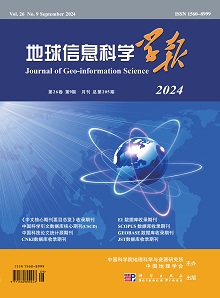Optical Satellite Remote Sensing Capabilities Analysis of the Marine Oil Spill
引用次数: 3
Abstract
The marine oil spill impacts on the marine environment with the features of high frequency,wide range and great hazards.Using remote sensing for marine oil spill detection has become an important means.In this paper,we started with the spectral character of the marine oil spill,and established the relationship with the common optical satellite sensors.Then we analyzed the main physical parameters of the different optical satellites,including the spatial resolution,the time resolution,width and band number.The MODIS sensor and HJ-1 satellite has a strong monitoring capabilities of marine oil spill.Based on this,we used MODIS,BJ-1,HJ-1 and FY3 optical satellites images to monitor the marine oil spill accident occurred in the Bohai Sea in March 2006 and June 2011.The MODIS image can reflect the information of marine oil spill clearly in 2006 and 2011.The HJ-1 image can reflect the information of marine oil spill clearly in 2011,but the BJ-1 and FY-3 images cannot reflect the information of marine oil spill clearly in the two oil spill accidents.HJ-1,BJ-1and FY3 satellites in the band set are similar,but the BJ-1 and FY-3 satellites cannot reflect the information of marine oil spill.So in this article we compared the contrast of oil-water spectrum and the variance of the sea water spectrum using the MODIS remote sensing data.Experimental results show that,when the variance of the sea water spectrum is less than the contrast of oil-water spectrum in the MODIS band,the oil spill information can be shown on this band clearly.When the contrast of oil-water spectrum is less than or close to the variance of the sea water spectrum,the oil spill information cannot be shown on this band clearly.So through the above analysis,the MODIS sensor has a strong monitoring capacity on the spectral response of oil spill,spatial resolution,temporal resolution and the instance.This article has certain practical value of the optical satellite selected in marine oil spill remote sensing monitoring.海洋溢油光学卫星遥感能力分析
海洋溢油对海洋环境的影响具有频率高、范围广、危害大的特点。利用遥感技术进行海洋溢油检测已成为重要手段。本文从海洋溢油的光谱特征入手,建立了与常用光学卫星传感器的关系。然后分析了不同光学卫星的主要物理参数,包括空间分辨率、时间分辨率、宽度和频带数。MODIS传感器和HJ-1卫星具有较强的海洋溢油监测能力。在此基础上,利用MODIS、BJ-1、HJ-1和FY3光学卫星影像对2006年3月和2011年6月渤海海域发生的溢油事故进行了监测。MODIS影像能较清晰地反映2006年和2011年的海洋溢油信息。HJ-1图像能较清晰地反映2011年海上溢油信息,而BJ-1和FY-3图像不能较清晰地反映两起溢油事故的海上溢油信息。波段集的HJ-1、BJ-1和FY3卫星相似,但BJ-1和FY-3卫星不能反映海洋溢油信息。因此,本文利用MODIS遥感数据,比较了油水光谱的对比和海水光谱的方差。实验结果表明,当MODIS波段海水光谱的方差小于油水光谱的对比度时,可以在该波段上清晰地显示溢油信息。当油水谱反差小于或接近海水谱反差时,溢油信息不能在该波段上清晰显示。因此,通过以上分析,MODIS传感器对溢油的光谱响应、空间分辨率、时间分辨率和实例都具有较强的监测能力。本文对选用光学卫星进行海洋溢油遥感监测具有一定的实用价值。
本文章由计算机程序翻译,如有差异,请以英文原文为准。
求助全文
约1分钟内获得全文
求助全文
来源期刊
CiteScore
2.70
自引率
0.00%
发文量
3757
期刊介绍:
Journal of Geo-Information Science is an academic journal under the supervision of Chinese Academy of Sciences, jointly sponsored by Institute of Geographic Sciences and Resources, Chinese Academy of Sciences and Chinese Geographical Society, and also co-sponsored by State Key Laboratory of Resource and Environmental Information System, Key Laboratory of Virtual Geographic Environment of Ministry of Education and Key Laboratory of 3D Information Acquisition and Application of Ministry of Education. Founded in 1996, it is openly circulated in the form of a monthly magazine.
Journal of Geoinformation Science focuses on publishing academic papers with geographic system information flow as the main research object, covering research topics such as geographic information cognitive theory, geospatial big data mining, geospatial intelligent analysis, etc., and pays special attention to the innovative results of theoretical methods in geoinformation science. The journal is aimed at scientific researchers, engineers and decision makers in the fields of cartography and GIS, remote sensing science, surveying and mapping science and technology. It is a core journal of China Science Citation Database (CSCD), a core journal of Chinese science and technology, a national Chinese core journal in domestic and international databases, and it is included in international databases, such as EI Compendex, Geobase, and Scopus.

 求助内容:
求助内容: 应助结果提醒方式:
应助结果提醒方式:


